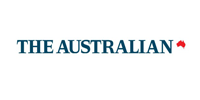 There are plenty of mixed messages and political pitfalls in today’s report into energy storage that has been ticked off by Chief Scientist Alan Finkel.
There are plenty of mixed messages and political pitfalls in today’s report into energy storage that has been ticked off by Chief Scientist Alan Finkel.
The starting point is that Australia’s electricity sector will get a minimum 35 per cent and potentially 75 per cent of power from renewable sources by 2030. South Australia and Tasmania could be as high as 100 per cent by this time.
To achieve it, storage costs alone could top $22 billion.
The report, compiled by the Australian Council of Learned Academies, says this spending will be critical to make intermittent wind and solar power possible at this scale.
Also critical would be “financial incentives” for either states or the private sector to build the level of storage required. Without storage, the council report says, the costs of electricity in Australia will continue to increase with “large negative implications” for the Australian economy.
There is plenty of political mischief in the projections for renewable energy penetration and potential cost. But, given that global climate change talks limped over the line in Bonn at the weekend there is reason to expect the global fixation on renewable energy generation and how to store it will become only more pressing.
The Intergovernmental Panel on Climate Change talks in Bonn achieved little other than survive US President Donald Trump’s declaration of withdrawal.
The more significant meeting will take place in France next month where the Paris Agreement host nation will work to keep the proposed $100 billion-a-year climate funding promise alive without US participation.
But lobby groups are already ramping up demands for government’s to increase their “ambition” ahead of next year’s meeting. Storage is the big hope but still poorly understood, especially in Australia.
The council report says the most likely forms of energy storage over the coming decade or so are pumped hydro, batteries, compressed air and molten salt.





